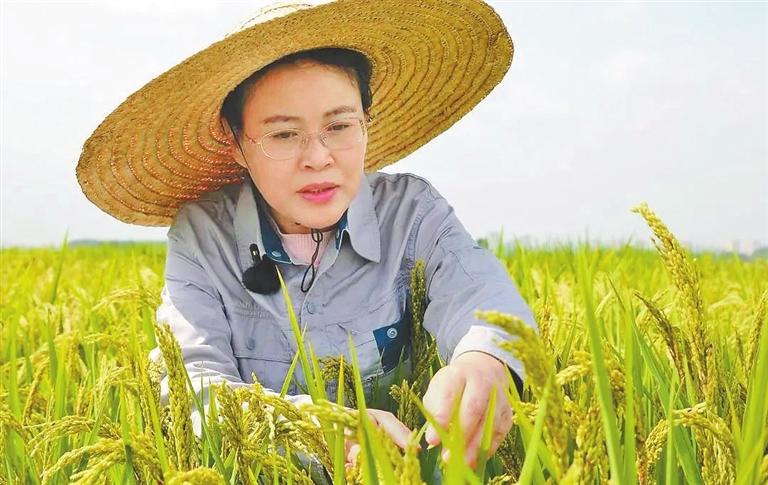
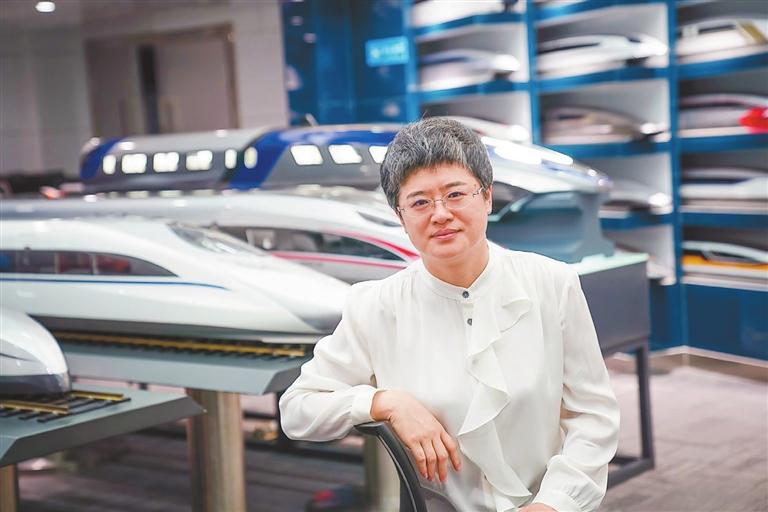
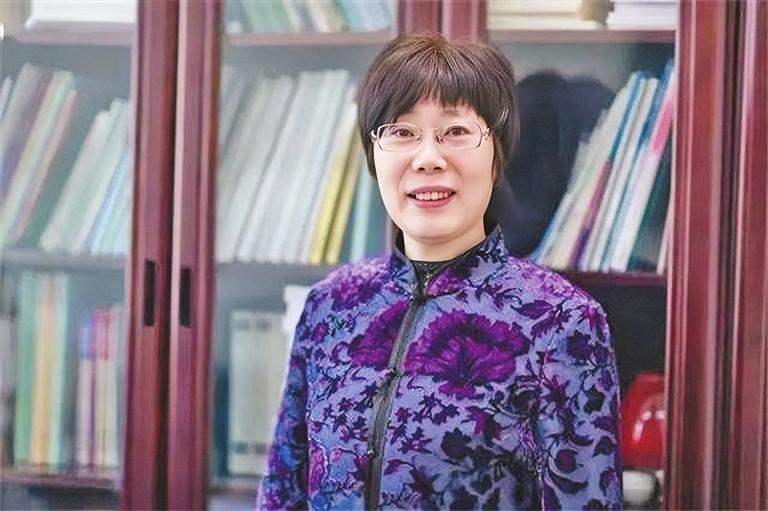
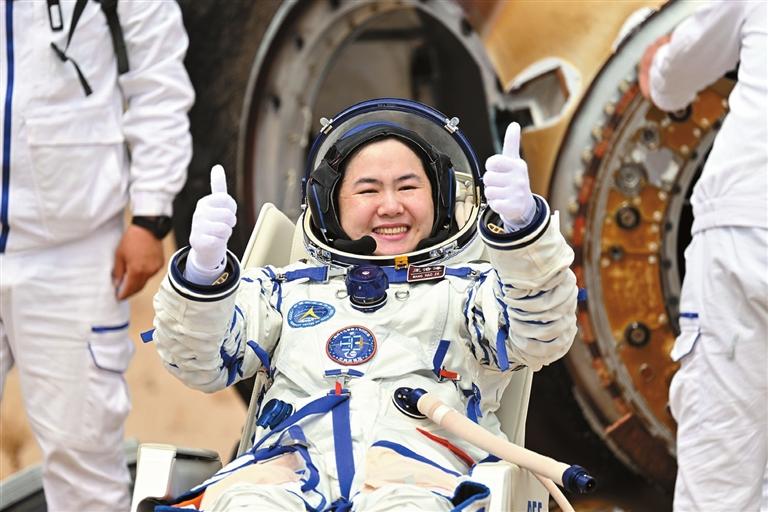
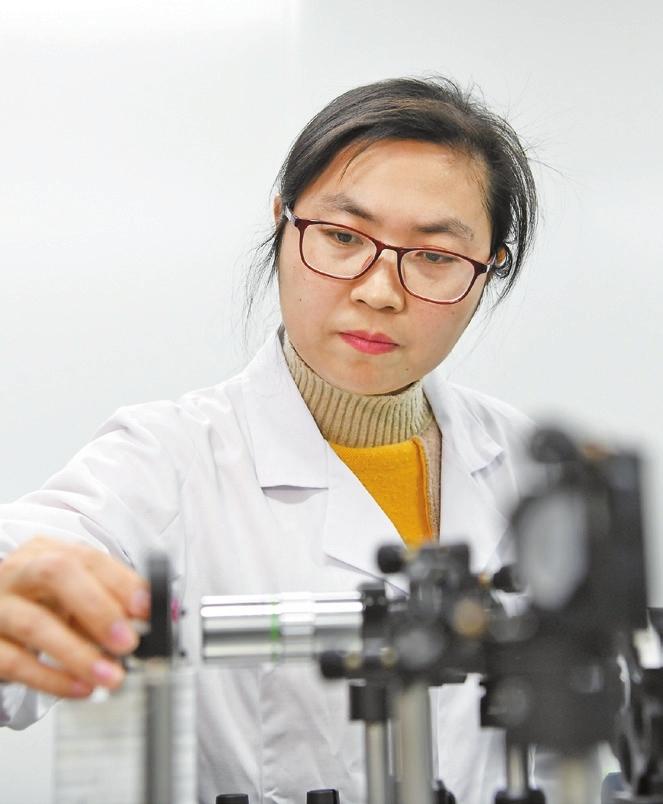
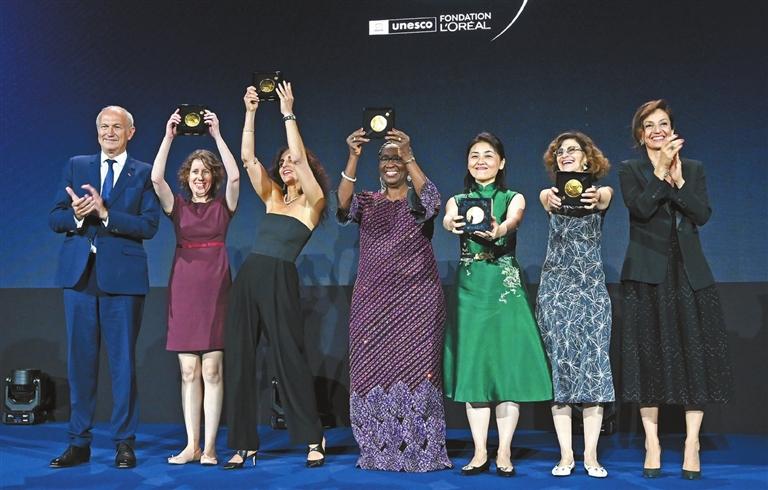
THE life of Wang Haoze, who is the third Chinese woman to embark on a manned space mission, has been marked by grueling training: desert survival drills with extreme temperature swings, claustrophobic psychological adaptability tests, and maritime exercises involving sea spray that she described as “cutting my ears like knives.” In her words, what drives her forward is the urge to contribute more to the cause of Chinese science and to help the world see more of the brilliance of women. “The universe is filled with stars, each one a tiny point, like the flames in my heart,” Wang wrote in a poem upon her return from a 183-day stay in orbit during the Shenzhou-19 spaceflight mission. Wang holds a master’s degree and joined the aerospace industry a decade ago, working on rocket engine research before volunteering and being selected as the sole woman in China’s third group of astronauts. Role models She is a pioneer among the approximately 40 million female science and technology workers in the country whose footprints can be seen across major national projects and cutting-edge fields, from the fields of space, high-speed rail, and commercial aircraft to the biomedicine and artificial intelligence industries. Together, they account for nearly half of China’s total sci-tech workforce. Liang Jianying is a chief scientist at CRRC — the world’s largest supplier of rail transit equipment — and has been a driving force behind China’s breakthroughs in rail. Under her leadership, generations of high-speed trains have been developed, including a 600-km/h high-speed maglev system, the CRH380A with a test speed of 486.1 km/h, and the Fuxing, which has a commercial operational speed of 350 km/h. “Living in a vast country with complex terrain and enormous passenger flow volumes, there is no reason we should not strive to be the best in the world, particularly with the strong support from the government,” Liang said. Like Liang, an increasing number of China’s female science and technology workers are venturing into uncharted territory, adding unique wisdom to propel global advancement. In the field of cryptography, Wang Xiaoyun, who is a member of the Chinese Academy of Sciences and a professor at Tsinghua University, was honored as one of five global laureates at the 2025 L’Oréal-UNESCO For Women in Science International Awards in May. UNESCO’s announcement highlighted that Wang’s transformative research has inspired numerous women to pursue careers in mathematics and cybersecurity. Focusing on hash functions, which are a cornerstone of cryptographic systems, Wang spent her first nine years in the field producing few publications. Her dedication culminated in global sensation when she broke two major international hash algorithms — MD5 and SHA-1 — in 2004 and 2005. Rather than resting on these laurels, Wang has since led her team to the new frontier of post-quantum cryptography, working to build stronger digital security defenses for the future. In the health-care sector, Zhang Wen, who is deputy director of rheumatology and immunology at Peking Union Medical College Hospital, has been tackling research on a rare condition known as IgG4-related disease for over a decade. She led the formulation of China’s first expert consensus and diagnostic guideline for the disease and was the sole Chinese representative to contribute to its first international treatment guide, integrating China’s clinical experience into global understanding. “We must not only manage individual trees but also contribute to the entire forest,” Zhang said. While millions of Chinese spent the National Day holiday travelling and shopping, Zheng Wenjing led her team in the fields, carefully selecting special rice seeds for her breeding research. She likens the work to sifting sand for gold, and in early October, rice fields in northeastern China began yielding a bountiful harvest. “Every year at this time, we spend the holiday in the rice fields because it is the golden period for seed selection. It is fulfilling to be able to find high-quality materials for cultivating new rice varieties with excellent yields,” said Zheng, 51, whose work has helped tackle critical challenges such as molecular breeding of japonica rice resistant to rice blast. “There are not many women in rice breeding because the work requires long hours in the field,” she added. Holding up half the sky From the laboratory to the field ridges, and from basic research to the front lines of engineering, women like Wang, Liang, and Zheng have become models of the growing number of Chinese women contributing to sci-tech innovation, supported by the country’s institutions and policies. Data show that China has roughly 40 million female scientific and technological workers, making up 45.8% of the total, a testament to the popular Chinese saying that “women hold up half the sky.” According to a white paper titled “China’s Achievements in Women’s Well-Rounded Development in the New Era,” released by the State Council Information Office on Sept. 19, China has created a series of measures to support female sci-tech talent in undertaking national projects and participating in decision-making, and to improve their evaluation and incentive mechanisms. With 30 years of strenuous efforts in agricultural research work, Zheng, deputy director of the Rice Research Institute of the Liaoning Academy of Agricultural Sciences, has won more than 20 science and technology awards, including the First Prize of Science and Technology Progress of Liaoning Province. North China’s Tianjin Municipality has hosted 18 sessions of the Women’s Innovation and Entrepreneurship Competition. The 2024 winner, a seven-woman entrepreneurial team, secured 12 million yuan (US$1.7 million) in angel investment through the competition. The “AI pathological diagnosis system” developed by the team is now being used in grassroots hospitals for cervical cancer screening. “The competition not only provides a platform for women, but also connects industry and academic research, helping to incubate start-ups,” said Lyu Lulu, whose team’s drug research project for immune cell therapy won this year’s championship. The Women’s Federation of Tianjin Municipality said that the past five editions of the competition have helped promote 387 technology-based enterprises, which offer some 12,000 jobs. The competition has become a powerful platform for promoting women’s entrepreneurial projects. This year marks the 30th anniversary of the Fourth World Conference on Women in Beijing, which adopted the Beijing Declaration and Platform for Action. Since the meeting was held in 1995, China has seen well-rounded development of women. According to the white paper, in 2024, female students accounted for 50.76% of all students in higher education institutions, up 14.15 percentage points from 1995. Women made up 50.01% of all graduate students, marking an increase of 22.43 percentage points since 1995. Song Limin, director of the Population Resources and Environmental Research Center of Liaoning University, pointed out that women’s development is deeply integrated with China’s economic and social progress. She noted that women in China have moved from traditional family roles to careers across all sectors of social and economic development, injecting “she power” into the country’s high-quality growth, while their participation in public affairs continues to rise. China has hosted the global summit of women in Beijing to mark the 30th anniversary of the 1995 conference. The Global Leaders’ Meeting on Women, co-hosted by China and U.N. Women from Oct. 13 to 14, aimed to reaffirm the spirit of the conference and accelerate the implementation of its outcomes. China released the white paper, consisting of five chapters, ahead of the meeting to highlight Chinese women’s outstanding achievements and contributions and affirm China’s commitment to joining global endeavors for women’s advancement. Huang Xiaowei, deputy head of the National Working Committee on Children and Women of the State Council, said at the white paper’s release that women’s roles have been fully established across various fields and China’s participation in global governance on women’s issues has reached an unprecedented scale.(Xinhua) | 
